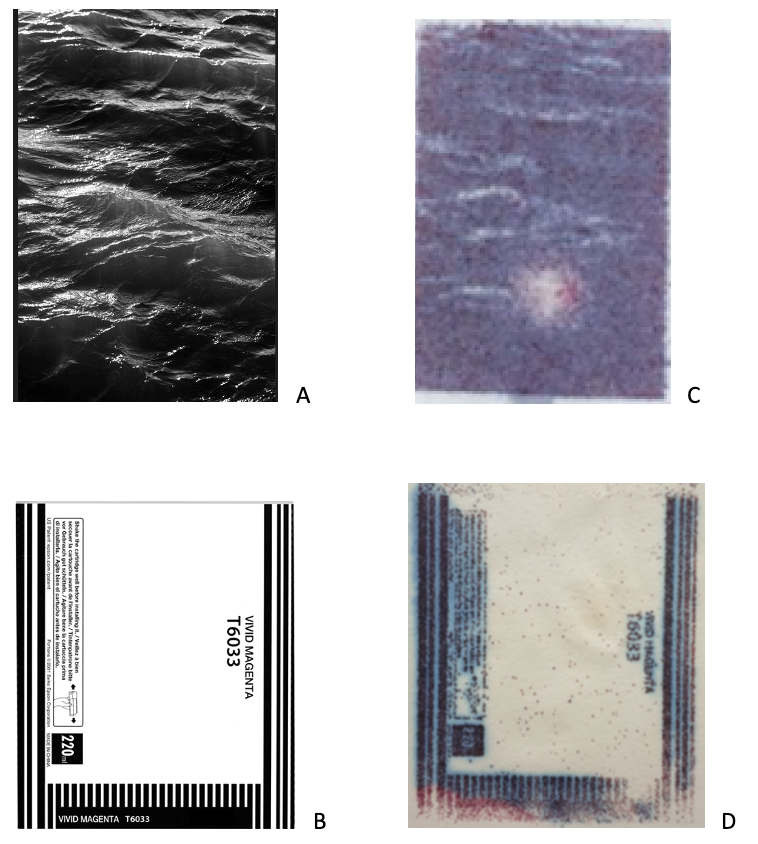
Within the Charles Viollette Institute, the team specialising in the study of secondary metabolites of microbial origin has demonstrated the possibility of using Streptomyces spores as printing ink. The work was carried out in collaboration with the Le Fresnoy studio in Tourcoing (national studio for contemporary arts, https://www.lefresnoy.net/fr ) as part of the artistic project of Olivier Sola, a 2nd year student.
The Streptomyces strain in question belongs to the coelicolor species, meaning "the colour of the sky". This colour is due to the production of a pigment, actinorhodin, which functions as a pH indicator, generating hues ranging from pink to blue.
A simple inkjet printer allowed productions with remarkable definition, the images appearing after incubation of the printed paper on a suitable nutrient medium
After optimising the titer of the spore suspension, the quality of the printing paper, the temperatures and incubation times, prints with this living ink resulted in images very close to the original image.
This ink is living, which generates evolving images if the printing papers are kept on the culture medium. The papers can however be dried to keep them at a particular stage of colouring. The works were presented during the exhibition Panorama 22: Les sentinelles from 15 October 2020 to 20 April 2021 at Le Fresnoy.
Figure: Images printed (A and B) with chemical ink compared to those produced using Streptomyces spores (C and D)
